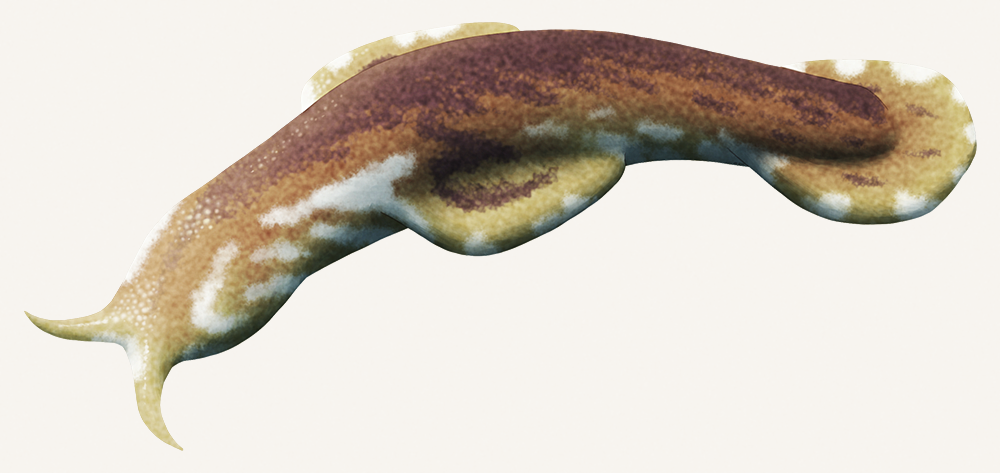Amiskwia was a tiny soft-bodied creature from the Middle Cambrian, known from a fairly small number of fossils – about 18 specimens from the Burgess Shale in Canada (505 mya) and an additional one from the Maotianshan Shales in China (515 mya).
Despite only measuring about 2.5cm long (1”), it was one of the larger animals alive at the time. Its body features a head with two tentacles and a small mouth, a pair of stubby fins, and a flattened paddle-shaped tail, suggesting it was an active swimmer. Its internal anatomy has been well-preserved in some specimens, revealing a brain, gut, and traces of what may be blood vessels and a nerve cord.
But we don’t know what type of animal it is. At all.
It was initially thought to be an early arrow worm. However, fossils of Cambrian representatives of that group have since been found, and Amiskwia lacks their characteristic spines and teeth. A relationship to ribbon worms or molluscs has also been suggested, but these hypotheses have the same problems with missing key features.
So, for now, Amiskwia remains one of the “weird wonders” of the Cambrian Explosion with no obvious affinities to any other known group.
[EDIT: As of 2019, Amiskwia seems to have finally been identified as a gnathiferan!]

